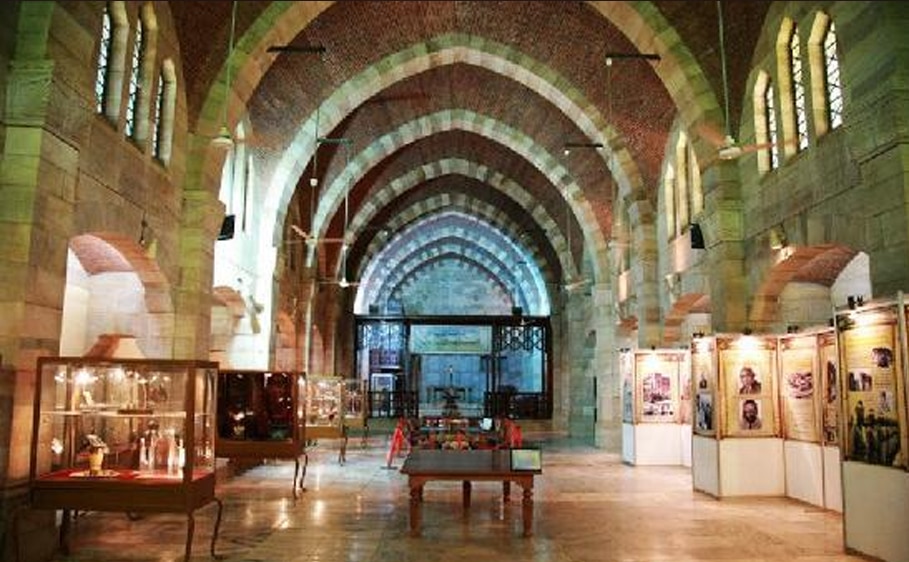
National History Museum
This museum is located on the Gama:A Street, opposite to the main building of the University of Khartoum. It was established during the second decade of this century and is relegated to the Faculty of Science. The museum demonstrates interesting and unique species of animals and birds found in Sudan. A collection of mummified reptiles; birds and animals are also exhibited.
The museum opens to visitors daily from 8:30 a.m. to 6 p.m., except on Monday.
Sheikan Museum
This museum is located in Elobeid Town in northern Kordofan State. The name Sheikan is Derived from a site near Elobeid, where the Mahdist forces vanquished a large British force at a battle in 1880.
The museum was initiated in 1965 and holds a substantial number of historic and ethnographic elements that reflect the various stages of Kordofan history. Moreover, the museum exhibits archaeological artifacts from early Stone Age (Paleolithic) to the Funj Islamic era (1505-1820). The museum also displays some interesting relics and items from the Sheikan battle.
The museum opens to visitors daily from 8:30 a.m., except on Mondays.
Sudan’s Ethnographic Museum
The museum was established in 1956 and is situated at the junction of Gam”a Street and ElMek Nimir Street. It enfolds a spectacular collection of material culture of various Sudanese tribes and peoples. This rich heritage of agricultural and nomadic appliances, domestic tools, ceremonial paraphernalia and utilities are artistically exhibited and Knowingly demonstrated.
The museum opens to visitors daily from 8: 30 a.m. to 5 p.m., except on Mondays.
Sudan’s National Museum
This museum can be regarded as Sudan’s main custodian of the country’s historical heritage, for is where all of the collected ancient cultural material of Sudan is documented, kept and displayed for the benefit of all visitors.
Sudan’s National Museum was established in 1971 at an attractive site on the Nile Avenue, overlooking the Blue Nile and not from its confluence with the White Nile. The museum consists of two main sections: The first is an outdoor garden of lush greenery, transgressed by a water channel symbolizing the Nile. Here, the monuments and temples of Napatan and Christian eras were reconstructed after their rescue from the flood caused by the construction of the Aswan Dam in the sixties.
The second section is comprised of a two-story building, which accommodates a huge collection of rare archaeological artifacts. This covers all stages and epochs of Sudanese civilizations, from the early Paleolithic period through Napatan, Meroetic, Christian and Islamic areas. Of particular interest to visitors is the rare collection of artifacts belonging to the Kerma civilization (2500-1800 BC).
The museum opens to visitors daily from 8:30 a.m. to 6:30p.m. Except on Mondays. Entry fees are Ls. 500.
Ali Dinar Museum
The museum is situated in El fasher Town in northern Darfur State in the west of Sudan. It accommodates an impressive collection of archaeological items that traces the region history since ancient tomes. Special attention is given to Sultan Ali Dinar”s outlandish belonging and household.
The Khalifa House Museum
This was the residence of the Khalifa Abdullah Ben Mohamed, who succeeded the Mahdi. The ground floor of the residence was built in 1888 and the upper floor in 1891. It became a museum in 1928. The structure of the residence itself is of great historical importance, since it exhibits the style and architecture prevailing at that period. The vast collection of artifacts displayed inside the two-story museum covers almost the entire Mahdiya rule, apart from a collection of personal belongings of the Khalifa, such as utensils, beds, swords, spears and various other elements of everyday use.
The museum opens to visitors daily from 8:30 Am. to 6:30 p.m. except on Mondays.
The Mahdi’s Tomb
It is located at Omdurman and encompasses and encompasses an important part of the country’s heritage during the Mahdist Era.
Omdurman market
This ancient Souq exhibits all types of handicrafts, artifacts, souvenirs and various items of Sudanese folk memorabilia. The market is usually open from 8:00 a.m. and closes at sunset.
Sheikh Hamad-el-Niles Tomb
On the western side of Omdurman on Fridays, many dervishes congregate dancing their famous and well-known rites and songs. The practice exemplifies tradition of Sufi in the Sudan.
Boatyard
It lies just off shore of the Abu Raouf quarter of Omdurman, on the western side of the Nile, where we can see the manufacturing of traditional boats, the way it have been done for centuries.